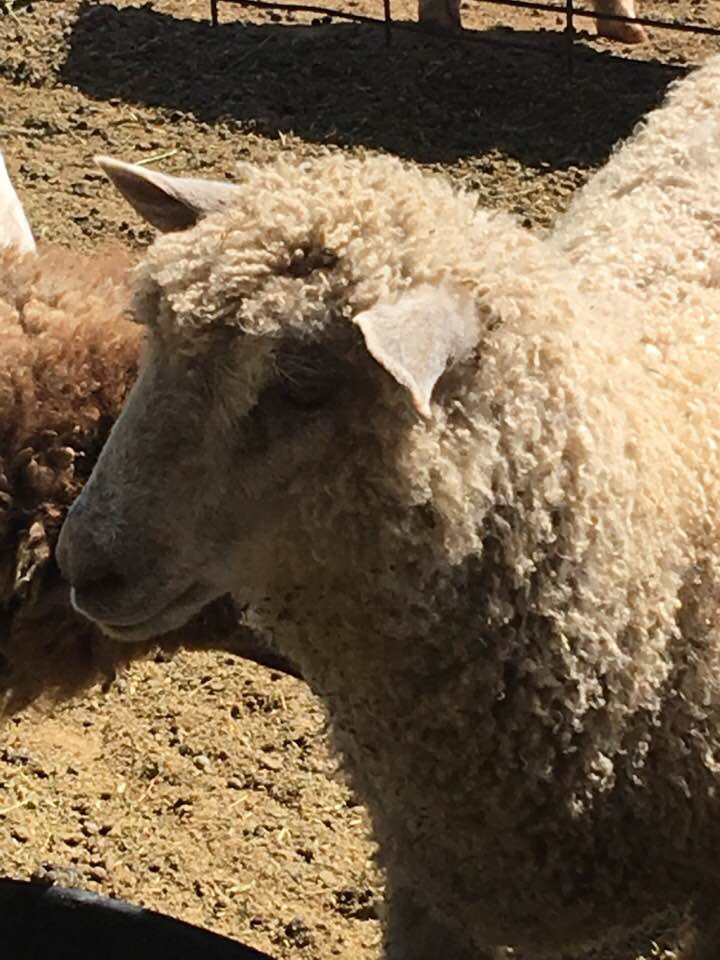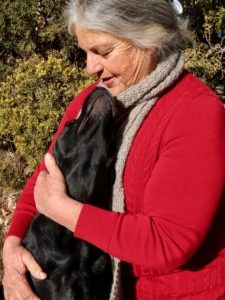I have been a knitter for 65 years, a spinner for 40, and I have raised sheep and goats in a small village in New Mexico since 1988. One bright morning of that year, I spent a small fortune on an armful of yarn to knit my husband an Aran sweater. As I stashed the bag in my car, I remember thinking, “What am I doing? I live in an agricultural area. I can grow my own wool.”
After all, how hard could it be?
A few months later, while I was still in my nightgown clutching my toothbrush, I heard a knock on the door. It was my vet with a tiny lamb in her arms. “A ewe delivered twins but rejected this one. I know you want to raise sheep. Here you go.” She handed me the lamb and a bottle filled with yellowish-white liquid. “Colostrum from the mother. It contains important immune factors. You can get milk replacer at the feed store.” She turned on her heel to leave. “Gotta go.”
“Wait a minute,” I called after her. “Is this a yarn sheep?”
“Yes,” she responded. “He’s a Navajo-Churro. It’s the breed the Spanish introduced to the Southwest, and the Navajo have been breeding them ever since. They have a topcoat and soft undercoat that can be spun into yarn.”
Named Willow, the lamb lived in a crate in our kitchen until we could furnish him with a pen of his own. He thrived.
Since I was not prepared to have a ram butting his way through the property, a couple of months later, Willow was castrated, becoming a wether in sheep parlance. He also became a pet.
Within the year Willow had grown to be quite large, his back coming to the height of my waist. He weighed about 100 pounds with a healthy covering of thick, caramel-colored fleece. The length of his fiber was about four inches, making him appear quite bulky and rotund.
I quickly learned vets have an expression: “Sick sheep seldom survive.” One of the most common ailments is bloat. Sheep can build up gasses that cause their bellies to swell. One Saturday morning – animals seem to always get sick on the weekends or in the dead of night – Willow refused to eat, a guaranteed sign of trouble.
A frantic call to my vet and I knew he had bloated. “What do I do?” I wailed.
“Give him some salad oil by syringe. Sometimes that calms the froth in their stomachs, and he’ll be fine. Call me back if he doesn’t resume eating.”
I drew up some canola oil in a large syringe and proceeded to administer it to the increasingly distressed Willow. Oil dripped out over him, over me, and all over the ground. I took a few minutes to refine my technique and eventually tipped up his increasingly slippery jaw to slowly plunge oil down his throat.
I called the vet again sometime later. “It’s not working. What now?”
“Okay, you need to get those gas bubbles out. Here’s what you do.”
After receiving her explanation, I stood slack-jawed. “You’re kidding, right?”
“Best chance to save him.”
I grabbed Willow’s halter and took him out to a grassy area in the front of my property to keep his fleece as clean as possible. He looked up at me, and I returned his gaze. “We’ve got to do this, my friend, if we’re going to save you.”
I reached around and grabbed a leg, pulling him off balance so he collapsed on his side. Then I wrapped my arms around this full-fleeced, hefty sheep, wriggling him back and forth until he was sitting on his tail leaning against my legs. By this time, Willow was sitting like a dog with his back and neck pressed against me.
So far so good, I thought.
I took a deep breath and bent over to get a grip around his torso. Now comes the hard part.
I pulled up and dropped him, pulled and dropped, again and again, bouncing him on his rump. Yes, I was trying to burp him like a baby.
Out of the corner of my eye, I saw a neighbor stop his yardwork and lean on his rake to gape at the spectacle. What must he be thinking?
Several more times, and Willow belched out a few volleys of fermented grassy air. His big eyes looked up at me, and I swear I saw a sense of relief. I rolled him off my legs. He scrambled to his feet and nibbled on the grass.
By now, I was soaked in sweat and my arms were throbbing. Shoulders aching, I waved at my neighbor. “All good,” I cried out. “He’s fine.”
As I led Willow back to his pen, I wondered about a possible next time: would shoving in a bunch of antacids work?
Willow survived the ordeal and went on to live to the advanced age of sixteen. One evening, years later, he walked toward me and collapsed at my feet. He had a great life, but it was time for him to rest.
My flock has now grown to almost thirty sheep and goats. My experience with them has included breech births, jagged cuts that had to be stapled, unexplained paralysis, a few more cases of bloat, and sudden death from unknown causes. My life with them has been filled with heartache and joy.
As to producing my own wool, you might be wondering how that has worked out. The brutal truth is with the cost of feed, vet bills, and shearing fees, that yarn for my husband’s sweater was well worth the price I paid at the store. But, for me, working with these wonderful animals, caring for them, and sharing my days with them makes every skein I produce worth so much more than its weight in gold.





Leave a Reply
Want to join the discussion?Feel free to contribute!